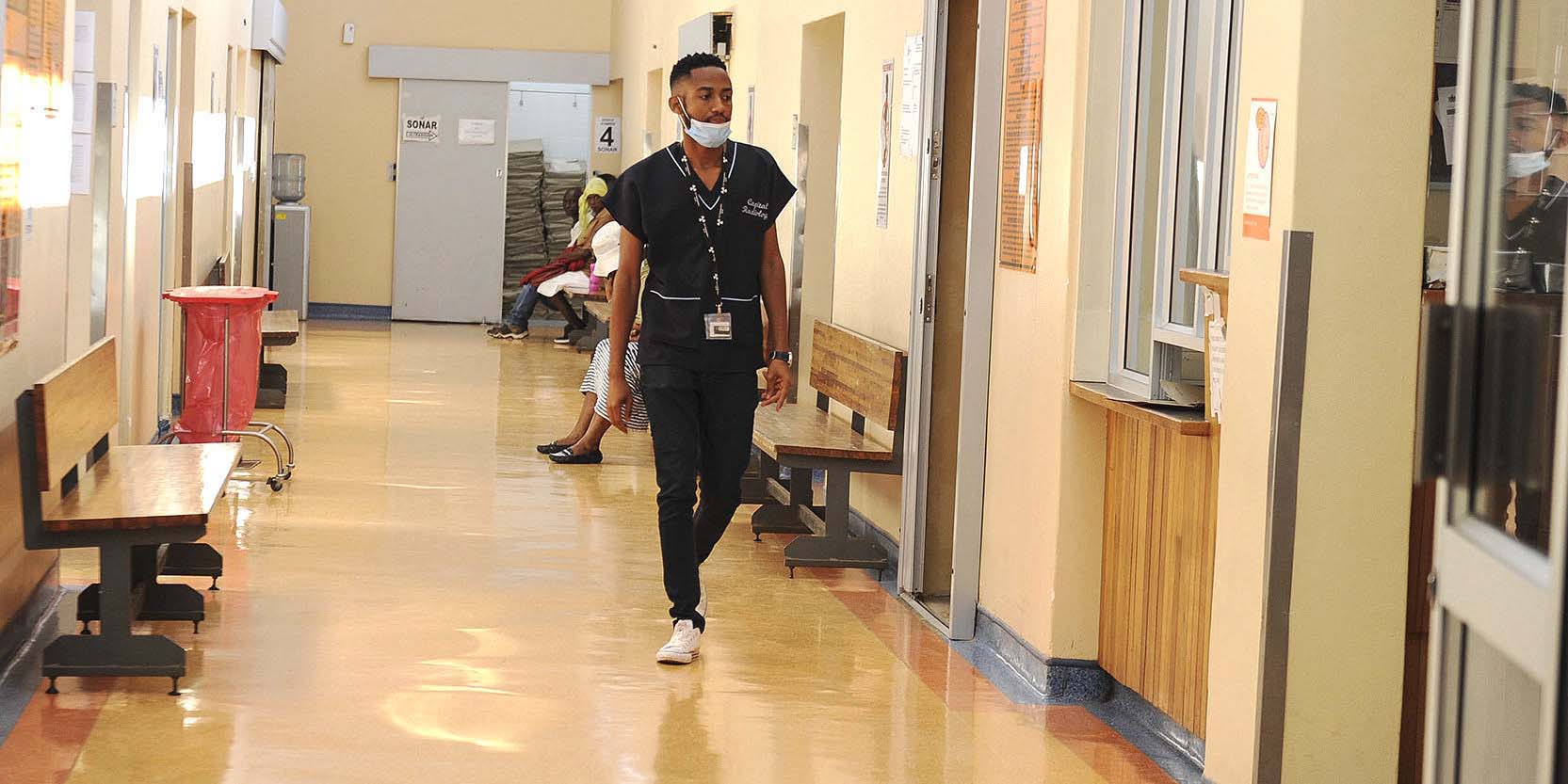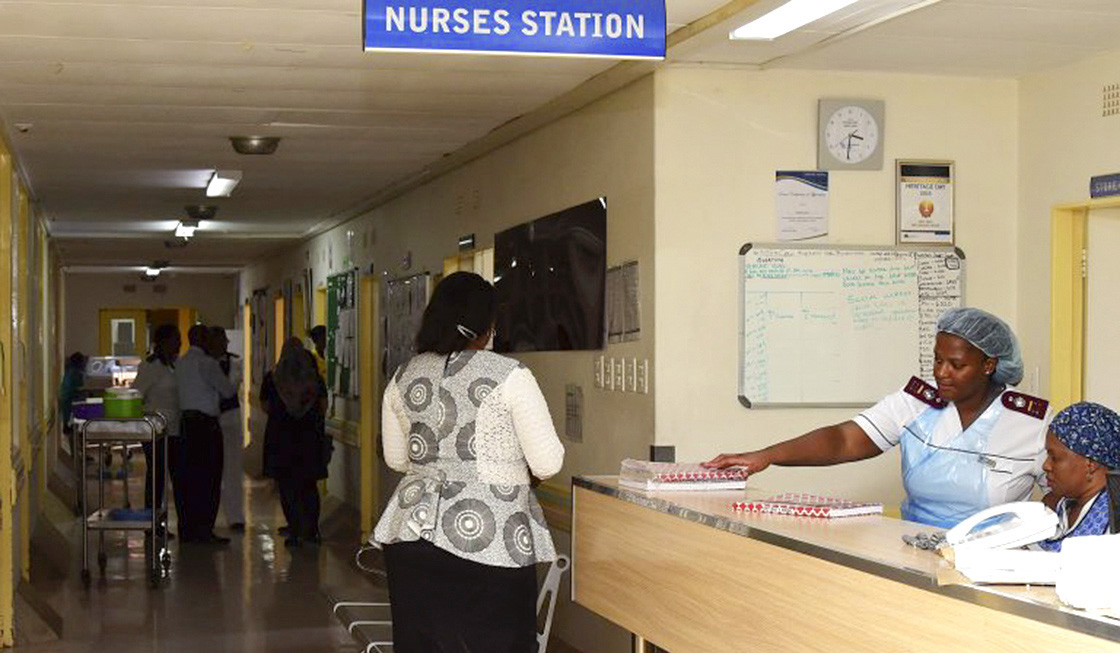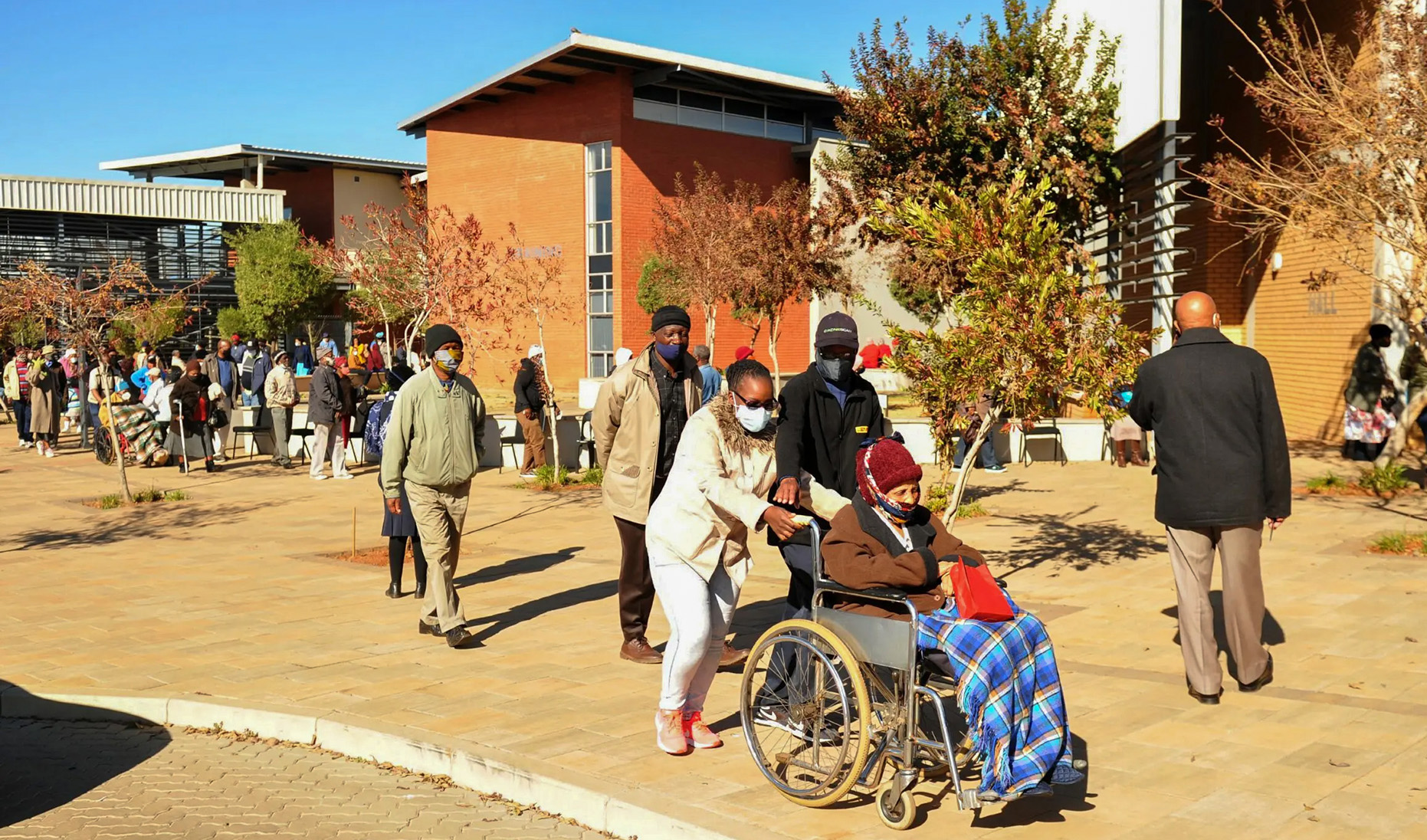SPOTLIGHT
Contrasting views and scepticism overshadow Gauteng’s new health information system

In an effort to improve service delivery and the quality of healthcare services, the Gauteng Department of Health in 2020, announced that it would be upgrading its information technology system. Spotlight looked at the progress of the new system in light of the ongoing challenges at the George Mukhari Hospital.
In January this year, the computer system at the George Mukhari Hospital broke down with serious implications for patient care. Gauteng Health MEC Dr Nomathemba Mokgethi confirmed this in a response to a written question by the DA in the Gauteng Legislature.
Mokgethi said the system failure meant the hospital could not “retrieve old patient files (paper-based) in case the patient lost their appointment cards and are forced to open new files which have a negative impact on the patient’s history”. This also impacted the handling of medico-legal case files, follow-up of information for the South African National Blood Services, and follow-up of complaints lodged.
As a result, the hospital now uses downtime manual registers both to record and to bill patients, Mokgethi said. “The retrieving of existing manual files is not possible without appointment cards and clerks end up having to open new files which make the history of the patient inaccessible and compromise the overall management of the patients.”
Mokgethi also said when patient files cannot be retrieved, these patients miss the opportunity to get proper treatment. The hospital also cannot trace patient demographics, including patient numbers and the patient’s debts. As a result, patients cannot be billed, and this contributed to a revenue loss for the hospital of about R4.8-million since January.

In an effort to improve service delivery, the Gauteng Department of Health in 2020 announced that it would be upgrading its information technology system. (Photo: Rosetta Msimango / Spotlight)
Mokgethi said fixing the old computer system at George Mukhari “became futile” and the department has “prioritised all efforts to deploy the new health information system to the hospital”. The implementation was expected to start on 11 July.
According to DA health spokesperson in Gauteng, Jack Bloom, this new system is “way behind schedule in all the hospitals where it is supposed to be put in”. “George Mukhari has no system, and I suspect it will be a fairly long time before the new system is operational,” he told Spotlight.
What is HIS?
In 2020, the Gauteng Department of Health announced that it would be upgrading its information technology system with a new programme called the Health Information System (HIS) to help improve service delivery and quality of healthcare in the province. The HIS is designed to, among others, reduce long waiting times in hospitals and community healthcare centres (CHC).
As reported by ITWeb at the time, the tender for HIS, worth R339-million, was awarded in 2020 to a company called Gijima. According to ITWeb, Gijima was making something of a comeback after “a number of contentious relationships and forays into litigation saw the company move into the background of government’s list of preferred partners”. The procurement process was run by the State Information Technology Agency.
The new system is set to replace the outdated legacy systems such as that at George Mukhari as well as manual patient management and clinical documentation systems.
In a press release in 2020, the department said the HIS would be implemented in different phases, with phase one starting in Hillbrow and Lillian Ngoyi Community Health Centres. It stated that HIS will simplify patient registration at facilities by generating a unique patient identification number, as well as creating a single patient file across Gauteng’s health facilities and end the duplication and loss of files.

Some experts say Gauteng’s new health information system would require a lot of information technology infrastructure and lots of skilled people. (Photo: Denvor de Wee / Spotlight)
Though the new system is said to be interoperable, we haven’t been able to confirm to what extent it is compatible with existing health information systems such as the District Health Information System and a new system being developed with an eye on National Health Insurance. In addition, while the HIS project includes some training of departmental staff, it is unclear to what extent the Gauteng Department of Health (GDOH) will be able to manage the system in-house once the five-year period of the tender is over. The Western Cape Department of Health, by contrast, develops most of its health information systems in-house.
Spotlight put these and other questions to Gijima. Though their response was low on detail, they did say on interoperability that their solutions “ensures integration and efficacies with existing third-party software”. On how they store data and ensure that people’s personal data is kept safe, Gijima spokesperson Roberta Gumede said, “Implementing a first-class solution for the GDOH, the highest standards are employed for governance, risk and compliance delivering data security at all levels of authentication, authorisation, data masking and encryption. Further to this, data is treated in regulation to Popia and health governance as observed in smart hospitals.” You can read Gijima’s full response here.
Progress to date
When Spotlight asked about the progress to date, former Gauteng health spokesperson, Kwara Kekana, explained that the system is being implemented in phases “across a multi-year period”.
Between November 2020 and April 2021, the programme was piloted at Hillbrow CHC, Lillian Ngoyi CHC, OR Tambo, Stretford CHC, Discoverers CHC, and Alexandra CHC. Kekana said the facilities concluded since then include nine CHCs in the City of Johannesburg District, four in Sedibeng District, three in the West Rand District, Sebokeng Hospital, Bheki Mlangeni Hospital, Jubilee Hospital, Mamelodi Hospital, and Thelle Mogoerane Hospital.
Among the benefits the department envisages for this programme, include accurate collection, storage and dissemination of patient information, a reduction in duplication of patient demographics, improved patient waiting times, improved data accuracy, and contribution towards the long-anticipated reduction in paper-based patient records.
“The system’s benefits also include the ability to track single patient quality metrics, including complications, hospital-acquired infections, and readmissions, in line with the National Health Insurance (NHI) objectives. And lastly, the reduction in medical litigation due to missing patient files in hospitals,” she said.

Mamelodi Hospital. (Photo: Gallo Images / Lefty Shivambu)
Since this system is already functional in some facilities, Spotlight asked whether it has actually decreased waiting times for patients.
“In general, and looking at the international trends on similar implementations, the resulting benefits are normally incremental and will be fully realised as more facilities are implemented,” she said. “We will need at least 60% of facilities across the province to have a visible return on investment.”
The HIS needs electricity to function. When asked what contingencies the department has in place to deal with rolling blackouts, Kekana said, “[The] Department of Infrastructure Development manages the power and backup power. The new HIS is implemented together with a downtime procedure to mitigate any unforeseen system challenges due to electricity and any other interruptions. Facility representatives are trained in switching in-between the live environment and the downtime procedures and [to ensure] continuity of services during a power failure”.
To date, Kekana said, the department has spent about R150-million on the project.
‘Good on paper’
Referring to HIS, Rich Sicina, president of the Young Nurses Indaba and a professional nurse at a public hospital, says that on paper, the rationale behind HIS is good, but implementing it is going to be a problem. Based on his own experience during the piloting phase of the HIS at Thelle Mogoerane Hospital, he doesn’t believe it will work.
“The system was very slow in registering the patients, and that reflected badly on the admin staff as they were seen as the ones who are slow in helping patients, which was the most frustrating part about the HIS pilot,” he said.
Sicina said implementing these innovations is always a problem as well as the maintenance of the equipment.
“At some point when Thelle Mogoerane was new, every ward had a TV, computer, and photocopying machine but the problem was maintenance. We can buy and install them, but that maintenance part is what the department, in most cases, struggles with,” he said.
HIS needed, but there are concerns
Public health expert Dr Aslam Dasoo of the Progressive Health Forum, pointed out that while such information systems are important, they have their shortcomings. “For example, in South Africa,” he said, “companies have supplied hospital information systems to various provincial departments. But it has minimal extent in its application. The one thing it doesn’t do is that it doesn’t integrate different hospitals into the system. None of the systems that are currently in use do that, but some hospitals run the other modules of a hospital information system, such as the clinical stuff and patient administration. So, it’s quite rudimentary at this point,” said Dasoo.
He referred to Botswana’s Health Information System which connects all major facilities to one another as an example. So, if a patient [there] has an HIV test done at one facility, they can visit another facility the next day with their patient identifier and get their results. Yet, he said that in Gauteng, this can’t even be done between different departments in a single hospital.

Patients at Thelle Mogoerane Hospital. (Photo: Denvor de Wee / Spotlight)
Dasoo said that this HIS system would require a lot of information technology infrastructure and lots of skilled people. “[But] they cannot do it; it’s another flag-waving exercise and possibly another tender and procurement disaster in the making. My only concern with this is that the history of this Gauteng provincial government when it comes to hospital information systems is a sorry history. They often get the wrong vendors and there’s a lot of corruption in this process,” he said.
Bloom echoed this sentiment in an earlier statement and said that patients are still suffering from an outdated system because of massive corruption under former Health MEC Brian Hlongwa. Among the charges Hlongwa is facing is the “awarding of an R1.2 -billion tender to the Baoki consortium in 2008 to set up a health information system and electronic health record”. “They were paid more than R400 million before their contract was cancelled a year later with no system installed,” Bloom said.
‘Get the basics right first’
Dasoo stressed that the province needs the Hospital Information System. “We need to modernise our hospitals. But if you cannot even provide the basics to facilities and you want to put in high-tech systems, despite that, then a degree of scepticism is called for about what you are doing.”
He said that the department needs to get the basics right first in facilities, like security. “So, for example, if you have a place like Charlotte Maxeke Academic Hospital, which would be an ideal facility to put in the Hospital Information System and we have cable theft or your CAT scanners are being stolen at work — preventing the emergency department from working — then what likelihood is there that your Hospital Information System infrastructure won’t be similarly damaged?” DM/MC
*This article was published by Spotlight – health journalism in the public interest.



















 Become an Insider
Become an Insider
Comments - Please login in order to comment.